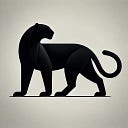Member-only story
A Response to Ruth Millington’s ‘Muse’
Ruth Millington’s recent book, Muse, is, as its subtitle suggests, revisionist. It seeks to ‘Uncover the Hidden Figures Behind Art History’s Masterpieces’. In doing so, it also seeks to dispel the stereotype of the artist–muse relationship, ‘defined by female (musal) subordination to male (artistic) authority’.
According to Millington, this stereotype is ‘embedded in our consciousness’, but it is — she also acknowledges — a corruption of the original meaning of the word, ‘muse’: ‘At their ancient origin, the muses were far from passive subjects for an artist to paint or write about. Instead, they were agents of divine inspiration’.
The nine muses of Greek mythology were the offspring of Zeus and Mnemosyne (meaning Memory), and they were thought to be the source of all artistic creation — a process in which the artist themself was considered passive.
‘Over time’, writes Millington, the concept of the muse changed. ‘Since its divine origins in Greek mythology, the term has acquired connotations of powerlessness’ — and the notion of the artist existing at the mercy of the muse switched to a young, mortal muse ‘existing at the mercy of an influential, older male…
